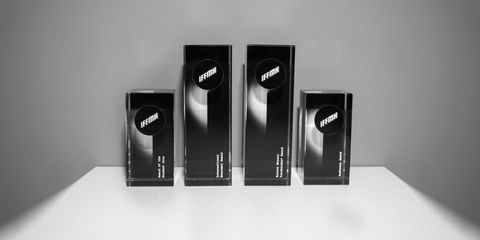With this AWARD we, the team of the IFFMH, honour the most impressive, stylish and innovative filmmakers of the present and present an outstanding film from their work. The GRAND IFFMH AWARD is endowed with 10.000 euros.
Grand IFFMH Award

TIM FEHLBAUM
His early short films already earned him first awards. Then came an impressive genre debut, followed by his first English-language film and, finally, his international breakthrough, which was crowned by an Oscar nomination: we celebrate the Swiss director Tim Fehlbaum with the Grand IFFMH Award.
The Munich Film Academy (HFF) has always had a close relationship with the mythical archetypes of American genre cinema. These were first deconstructed by its early students (Wim Wenders) and later reconstructed (Roland Emmerich). Like his two predecessors, Basel-born Tim Fehlbaum also shot a so-called “camera exercise” during his first semester at the HFF, for which students traditionally received three rolls of black-and-white 16mm film. With these rolls, Fehlbaum shot ›Für Julian‹, a gripping little thriller about a brutal kidnapping. A young man is dragged into a car, a mask is pulled over his head, and he ends up tied to a chair and held at gunpoint. This Hitchcockian exercise in surprise and suspense later won the “Shocking Shorts Award”. The prize consisted of a two-week master program at Universal Studios in Los Angeles (Hitchcock’s cinematic home since 1960, where the ›Psycho‹ motel is still part of the studio tour). After just one year of study, Fehlbaum’s path seemed more or less set in stone.
He later developed similar narrative ideas into his first two features. First came the post-apocalyptic vision ›Hell‹ – a journey through a scorched Germany, tinged yellow by the sun, sand, and dust (it was actually shot in Corsican wildfire zones). Then followed the blue-toned, shimmering sci-fi film ›Tides‹ (this time shot in English, but mostly filmed in a vast water tank at the Bavaria Studios in Munich). Both films are, above all, gripping thrillers. At the same time, they each contain an additional layer – one that takes us back once more to ›Für Julian‹.
Fehlbaum was perhaps the first HFF student to obtain an additional fourth roll of film: color stock. Because the camera exercises at the time were still edited entirely by hand on a flatbed, he used that fourth roll to transfer color MiniDV footage back onto film (a look that had only recently been elevated to cinematic status by Thomas Vinterberg’s ›The Celebration‹ and Dominik Graf’s ›A Map of the Heart‹). This parallel video material introduced a second narrative dimension. The black-and-white images of an apparent violent crime turn out to be nothing more than projections of Julian’s internal fear. The color images, on the other hand, reveal the external “truth”: Julian’s kidnapping is only a prank pulled by his best friends, who have planned a surprise party for his 18th birthday. This second narrative layer transformed a small suspense drama into a cleverly crafted reflection on film images (and their relationship to reality).
Alongside Hitchcock, the works of Michael Haneke (›Funny Games‹ and, especially, ›Benny’s Video‹) provided a second crucial point of reference for this short student film. In Fehlbaum’s first longer works, such meta-layers are more subtle and hidden but remain present. Philip in ›Hell‹ or Louise in ›Tides‹ initially perceive the outside world only from inside a car or through a well shaft – narrow slits or apertures that at times correspond to cinematic aspect ratios. Finally, in ›September 5‹, this relationship is completely reversed: it’s only on the surface that the film is a suspense drama; beneath that, the narrative addresses the professional creation of images. At its climax, a TV crew must confront the responsibility inherent to this activity.
As such, a large circle has come to a close: ever since that fourth roll, Fehlbaum’s films have always also been films about filmmaking – and this is just one of the reasons that we are here to celebrate him.
- Laureates of previous yearsread more
